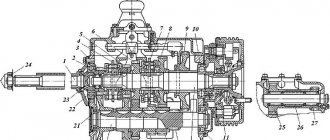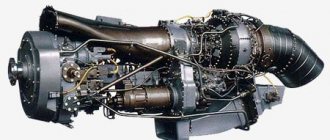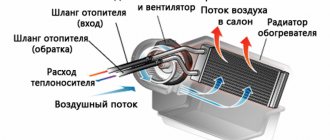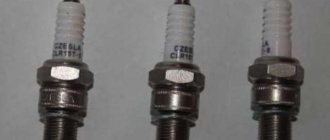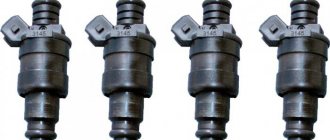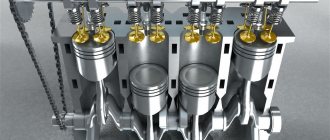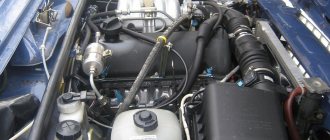Purpose
The purpose of a car heater, in other words, a “stove,” is clear to everyone - this device is designed to maintain heat in the car interior. However, the functions of the heater are somewhat broader - in addition to comfort, the heater is needed to prevent the car windows from fogging up. This situation arises not only in winter, but also in spring and autumn, when the task of the stove is reduced only to solving this kind of problem.
History of appearance
Before the advent of automobile heaters, ordinary stoves and gas lamps were installed in cars. The first autonomously heated cabins appeared in 1917 on American cars. The cabin was then heated from the exhaust pipe. For example, a 1929 Ford A was heated this way. Also, to heat the interior, an additional radiator and a fan were installed to blow it around. This heating system was first used on General Motors cars. Gradually, it was this heating scheme that found development throughout the world.
In the USSR, car owners, in order to avoid freezing, made holes in the partition between the cab and the engine compartment. This helped them in the most severe frost.
Modern cars are heated using engine coolant.
Operating principle of a car heater
In the history of the car, there were even such types of interior heating as compact coal and wood stoves, and gas lamps. Later, exhaust gases were used for heating. Automakers have practically abandoned water-based interior heating, which was used in some models of passenger buses. Heated water circulating through pipelines under the seats and on the walls of the cabin quickly cooled, and the heating system had low efficiency.
Modern heating systems primarily use engine coolant to heat the interior using heated and filtered atmospheric air. A fan is used for forced air intake. The air is heated by the heat transfer of a running automobile engine, the intensity of its supply is regulated manually or automatically.
A normally functioning car heater, which drivers simply call a “stove,” heats the air in the cabin to 20–25 degrees Celsius in winter. An additional function of a car heater is to warm up foggy or frozen car windows and defrost frozen windshield wipers.
Principle of operation
The design of the stove consists of a radiator, pipes for coolant circulation, a fluid flow regulator, air ducts, dampers, and a fan.
Behind the front panel there is a heater core. Two tubes are connected to it, through which coolant flows into the radiator. This fluid circulates using a pump (a special pump) through both the engine cooling system and the car's heating system.
When the engine heats up, heat exchange occurs. Antifreeze cools the engine by removing heat from it. Hot antifreeze enters the heater radiator. The radiator heats up like a regular battery. At this time, the stove fan drives cold air through the radiator. Heat exchange occurs again: the radiator gives off heat to the air, and the air cools the radiator. Warm air blows into the cabin, and the cooled antifreeze ends up back in the engine and cools it. This heating system is the most common and efficient.
In order for the interior to warm up in winter, it should be about 30 degrees at the outlet of the stove. This temperature will not only warm up the interior well, but will also prevent the windows from fogging up. The airflow position switch, located on the dashboard, adjusts the position of the dampers. They direct air flows in a certain direction: face, legs, windshield. The direction of flow to the windshield is necessary almost constantly. This is necessary so that excess pressure is created in the cabin. At this pressure, the windows will not fog up, and dirt and dust will not get into the cabin.
The stove is an additional radiator. If the car is not warmed up, then when the heater is turned on, additional cooling of the system occurs. Because of this, rust appears on the walls of the radiator, and the engine takes longer to warm up. In addition, air humidity increases, and windows sweat. Therefore, the stove must be turned on when the coolant has warmed up to at least 50 degrees.
How does a car's heating and ventilation system work?
Modern cars are designed in such a way that a constant flow of fresh air blows through the interior, maintaining the desired temperature even with the windows closed. The outside air can be heated by the engine to prevent the windows from fogging up.
Standard heating system
The ventilation system of modern cars provides a constant flow of fresh air and heats it when necessary.
Airflow
The air enters into a large hole located at the front of the car. When moving in this area, pressure is created, pushing air into the duct. The air then enters the heater, which heats it up as needed. The air intake grille can be located in the upper part of the hood.
Air enters the cabin through openings located on the dashboard and in the lower part of the body. The fans can be rotated to direct air flow towards the driver and front seat passenger.
Some cars have fans that direct air toward rear seat occupants.
Air flow from the holes in the strip located at the bottom of the windshield prevents it from fogging. In later models, this function is also provided for the side windows.
In many modern cars, the air ducts are equipped with valves that open and close as needed.
There are outlet openings at the rear of the housing. When moving, the pressure on them is reduced, and the air flows out freely.
Heater (stove)
In cars with a water cooling system, a bundle of pipes is mounted in the heater housing. The resulting small radiator receives hot water from the engine.
The trapped air is warmed as it passes through a bundle of hot water pipes.
The ventilation system also contains electric fans that move air flow when the car is stationary or not moving fast enough.
Electric fans can operate in different modes according to the needs of the driver and passengers.
Methods of thermoregulation
Heating system with water valves
In a heater with water valves, air flows through a bundle of pipes. The temperature in the bundle is determined by the amount of hot water passing through it.
Heating system based on air mixing
In a system based on air mixing, the pipes are heated to a certain temperature, and warm air is mixed with cold air due to the movement of the valve.
The temperature to which the air is heated is determined by the water valves or mixing system. Water valves are often found in older models.
A temperature sensor located on the dashboard sends a signal to the faucet, which regulates the amount of hot water supplied to the pipes. This system is slow to respond to changes, making it almost impossible to set the exact temperature.
The pipes of an air-heated system are constantly heated. The temperature sensor changes the position of the flap, which mixes already heated air with cold air captured from the outside.
Often, such a system can send cold air to the windshield blower even if all other fans are running warm air.
The flaps that control the air supply to the heater can be started manually by switching the lever, which is located on the dashboard and is connected to the flaps by cables.
In expensive cars, you can see electronic controls that receive information from sensors installed near the inlets.
Air cooled vehicles
On vehicles with an air-cooled engine, the air in the interior heater may be warmed by moving over the cooling fins near the hot exhaust manifold.
Thanks to a mixing system with temperature-sensitive valves, the air is brought to the desired temperature and maintains a comfortable atmosphere in the cabin.
If necessary, the air is additionally heated using a heat exchange device, which receives heat when fuel is burned.
Unlike water systems, air systems have a heat exchanger that allows the heater to be powered by the engine. Otherwise, the methods of heat distribution are identical.
Types of heaters
Along with liquid heaters, there are also liquid electric heaters and air heaters. They are used as additional heaters.
Liquid electric heaters use electrical energy. This heater resembles an ordinary boiler. But there are also more complicated models. They include a battery charger and a timer. The main disadvantage of such devices is their dependence on the electrical network.
The operating principle of air heaters is similar to the operation of liquid heaters. Only they heat not the liquid, but the air itself. These devices only heat the cabins, they do not heat the engine. Their advantage is lower fuel consumption.
Autonomous interior heaters
In addition to heating functions when the engine is running, in some cases it is necessary to provide pre-heating of the interior and warming up the engine. For this purpose, autonomous heaters and pre-heaters are installed on trucks and passenger cars. Among the high-quality manufacturers of autonomous heaters, the brands Webasto, Eberspacher, and the Russian brand “Planar” stand out.
Despite the mistrust of car owners in autonomous heaters, the benefits of such a device are obvious. When using it, there is no need to idle warm up the engine, which brings significant fuel savings. Using the remote activation of the autonomous heater, the driver gets behind the wheel into a warm interior with clean windows and wipers ready for work. Engine wear is reduced by eliminating cold starts with cooled oil.
For trucks in a number of European Union countries, autonomous heaters are legally recognized as mandatory equipment. Without them, long-haul truck drivers are prohibited from spending the night or resting in cabins at roadside stops and cargo parking lots. In this way, European authorities are fighting additional emissions of harmful exhaust from running engines into the atmosphere and reducing noise levels.
Most often, autonomous heaters operate on the main fuel of the engine. Therefore, their models are divided into gasoline, diesel, and gas. These heaters are similar in design.
All models, assembled in a separate compact case, use:
- sealed combustion chamber;
- fuel supply pipeline from the standard fuel tank;
- air blower;
- circulation pump;
- heat exchanger;
- spark plug or glow plug;
- overheat sensor;
- Control block.
Gasoline air heaters for passenger cars are more compact. With a power reaching 46 kW, they can be installed under the hood of a car. Diesel heaters and liquid engine pre-heaters for trucks are distinguished by greater power (up to 82 kW) and size.
The electric autonomous heater does not use automobile fuel and operates on the principle of a fan heater. The heating device is often called a hair dryer. The sealed ceramic housing contains intake and exhaust fans, an electric coil or ceramic elements that heat the air. An autonomous electric hair dryer, powered by a battery through a cigarette lighter, does not have enough power to fully heat the interior, so it is used as an additional heating source.
A stationary electric heater of a similar design, powered by the on-board electrical network, has become the basis of the heating system of electric vehicles. It is this that provides thermal comfort in the cabin, built into the climate system unit and supplemented by heating of all seats of the car.



